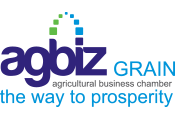
Articles & Insights
BFAP report provides key insights into malting barley

A report aimed at assessing and quantifying the risks associated with the production, storage, handling, transport, and processing of malting barley has been tentatively released. This follows the South African Winter Cereal Industry Trust (SAWCIT), now the South African Winter Cereal Industry Agency (SAWCIA), commissioning the Bureau for Food and Agricultural Policy (BFAP) in 2023 to conduct an independent, in-depth analysis of the local barley value chain. A draft report has been released to industry for discussion.
The report was commissioned during a period of great uncertainty in the barley industry. Barley production in South Africa stands at a pivotal point. In the pre-Covid period, the South African barley industry grew consistently at an average rate of 2% per annum, bringing the industry almost to a level of self-sufficiency in the market for barley for human consumption (beer).
However, the barley industry has faced a series of hurdles in recent years – from unpredictable weather patterns and rising input costs to the far-reaching impacts of the Covid-19 pandemic. These challenges have disrupted both production and market stability, increasing risk and causing a shift in momentum. Yet, amid these difficulties lies renewed potential to reposition barley as a resilient, competitive, and profitable crop in South Africa’s dynamic farming landscape. The BFAP barley report addresses these challenges and opportunities.
Balancing supply and demand
The South African barley industry is driven mainly by the demand for malting-grade barley, to supply the two large-scale commercial malting facilities owned and operated by AB InBev. Although small volumes of high-quality barley are used in the production of health foods, these volumes remain small in comparison to the volumes required for the brewing industry.
SAB Maltings provides an industry mandate for the barley they require from the local market. The mandate equates their total requirement. Balancing the supply and demand of barley to malt and malt to beer is a complex process involving multiple supply channels and numerous stakeholders, as well as stringent performance criteria affecting volume, cost, and quality.
There are two malting facilities in South Africa: one in Caledon, which is supplied with barley grown in the southern part of the Western Cape; and the other in Alrode, Gauteng, supplied with barley grown under irrigation in the interior of the country. Around 280 000 tonnes of barley are produced on average in the Western Cape under dryland conditions, whereas around 75 000 tonnes are grown in the Northern Cape, Limpopo, and North West. (Barley can be transported from the Western Cape to Gauteng to balance supply and demand requirements.)
If the supply of local barley is not sufficient to meet the demand for malting, barley is imported to ensure that the local malting capacity is fully utilised. This market structure holds both benefits and risk for SAB Maltings and producers in that it offers a secure market but with multiple risks, given the specific quality requirements for malting-grade barley and limited secondary market options for the barley that does not meet malting-grade quality.
Collaboration with stakeholders
Prof Ferdi Meyer, managing director of BFAP, explains that the study
required collaboration with all industry players to provide time series data for in-depth analysis to identify practical, implementable mitigation measures that will ensure the long-term sustainability and commercial viability of the industry. The independent research emphasised the importance of data sharing, while ensuring data confidentiality and sensitivity.
Click here to read full article for by Christal-Lize Muller, Plaas Media.
